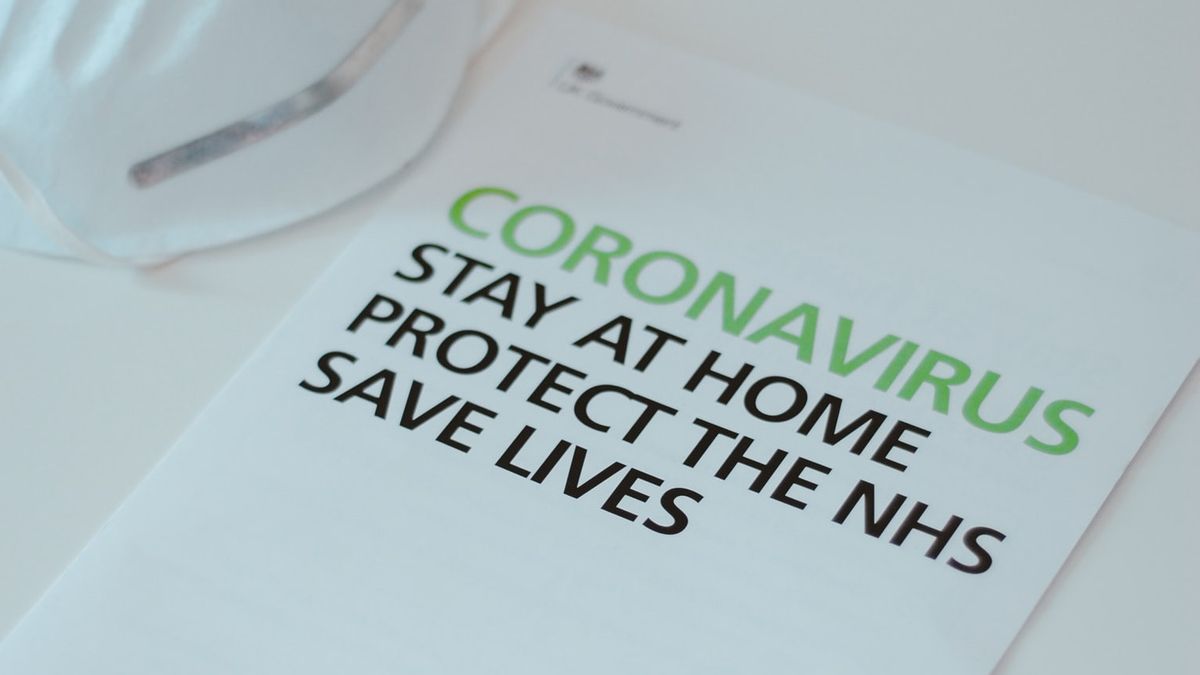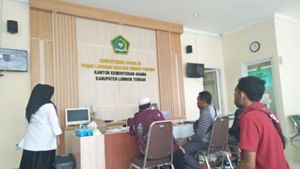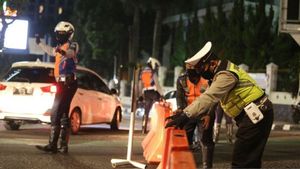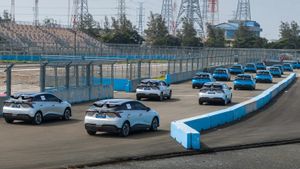JAKARTA - The COVID-19 pandemic simulation test conducted by the Center for Thorough Research of Vision (Vision) with a dynamic system model shows that the journey of a new type of corona pandemic in Indonesia has subsided in June 2020. This is indicated by the number of cases that have died from COVID-19 and recovered in Indonesia. which will reach a constant state on the 100th day since the first positive case was confirmed, namely on June 8, 2020.
"From the tests conducted by Visi on 31 days since the first positive case of COVID-19 in Indonesia, a reproductive number was found of 19. This means that every one infected person can infect 19 other people," said Vision Researcher, Widyar Rahman in his written statement on Thursday. 23 April.
Based on the value of the reproductive number, the control of pandemic distribution can be predicted. The development of the number of new COVID-19 cases as a result of transmission from infected people in Indonesia will last for about 50 days. This time span is calculated from the day when positive cases were first confirmed in Indonesia, namely March 2, 2020. Thus, the infection period is expected to last until 20 April 2020.
Because of the transmission period which lasts for 50 days, on the 100th day the mortality and recovery rates are constant.
The dynamic system test was carried out by the Vision Research Team through a process of validating the historical data monitoring model issued by the Ministry of Health of the Republic of Indonesia for the period of March 2, 2020 to April 2, 2020 as daily reference data. This data includes the number of cumulative cases, the number of patients recovered, and died. In general, the model carried by this Vision has a simulation time span of 180 days which will end on August 31, 2020.
Furthermore, according to Widyar Rahman, basically the assessment of the health aspects of COVID-19 with pandemic modeling carried out by Vision followed the daily pattern that had occurred since the first case appeared. In other words, the self-isolation program, social distancing, the use of masks, washing hands using soap, and the use of hand sanitizers that are being promoted by the government are included in this model.
This monitoring process actually has certain limitations, because the data released officially by the government every day may still leave people undetected or undetected.
Some other limitations are that this model cannot specify ODP and PDP. The model also does not take into account the incidence of virus reinfection, the social impact of the pandemic due to government policies, and the cultural influence of the community in responding to the COVID-19 emergency.
Asymptomatic
Vision designed analysis is not without reason. Since its appearance in China in December 2019, the SARS-Cov Type 2 virus, which causes the disease, which is officially referred to by WHO as COVID-19, has become a pandemic. In Indonesia itself, since the first case was announced on March 2, 2020, the data for exposed individuals has continued to increase.
As of April 22, 2020, the number of positive COVID-19 cases reached 7,418 cases or an increase of 283 new cases confirmed from examinations using Polymerase Chain Reaction (PCR). From data from the National Disaster Management Agency (BNPB), the number of deaths reached 635 people and 913 patients were declared cured.
Meanwhile, the number of people under monitoring (ODP) increased by 7,241, to 193,571 people. Meanwhile, the accumulation of patients under surveillance (PDP) reached 17,754, or an increase of 1,091 from the previous day's data.
In addition to the figures presented by the BNPB, there is a concern that the potential for a bigger case is due to the presence of asymptomatic findings or people without symptoms. This indicates that the spread of the virus is difficult to detect and uncontrollable.
Widyar Rahman calls this phenomenon an alarm of the urgency of the dynamic systems model approach. He assessed that testing this model could meet the need for knowledge of predictive distribution patterns of this outbreak in Indonesia.
"The number of individuals dying from this virus is influenced by the mortality rate which is estimated to be around 5.8 percent based on modeling. This high percentage also shows that there is a potential for a much larger number of positive cases compared to official data released by the government," said Visi Research Director Nugroho. Pratomo.
Don't go home
Although the analysis shows that the pandemic will not last for years in Indonesia, efforts to prevent transmission by the government still need to be improved and supported by the active role of all citizens. Thus, the decline in the number of cases was faster than expected.
The analysis showing the pandemic abated in June also doesn't mean contagion will not occur in the future. The most recently reported cases of COVID-19 wave 2 in China demonstrate this.
Nugroho said that there is a time span of eight days between the constant conditions shown in the modeling (8 June 2020) and the deadline for the government's emergency response which falls on 31 May 2020. Therefore, Visi assesses that the government's decision to prohibit homecoming is correct.
"It is important to comply with the government's decision. People refrain from going home as a way to prevent wider spread. The government's efforts to ban homecoming are seen as the right effort to limit transmission apart from the implementation of PSBB in some areas, use of masks, diligently wash their hands properly. , keeping the environment clean and so on, "said Nugroho.
This refers to the results of the Vision analysis test which shows that the number of contacts between individuals and being infected with COVID-19 is around 34 times per day. Infected here does not necessarily show symptoms of illness, including ODP and asymptomatic. This means that if various interventions are not carried out to break the chain of transmission, the frequency of exposure per day of each individual will be met and cause transmission.
Individuals who are susceptible to infection are estimated to have an incubation period of 6.5 days until they become sick. Meanwhile, the duration of the disease until recovery is predicted to take around 20 days, but it still depends on the level of immunity and the quality of treatment.
The English, Chinese, Japanese, Arabic, and French versions are automatically generated by the AI. So there may still be inaccuracies in translating, please always see Indonesian as our main language. (system supported by DigitalSiber.id)













